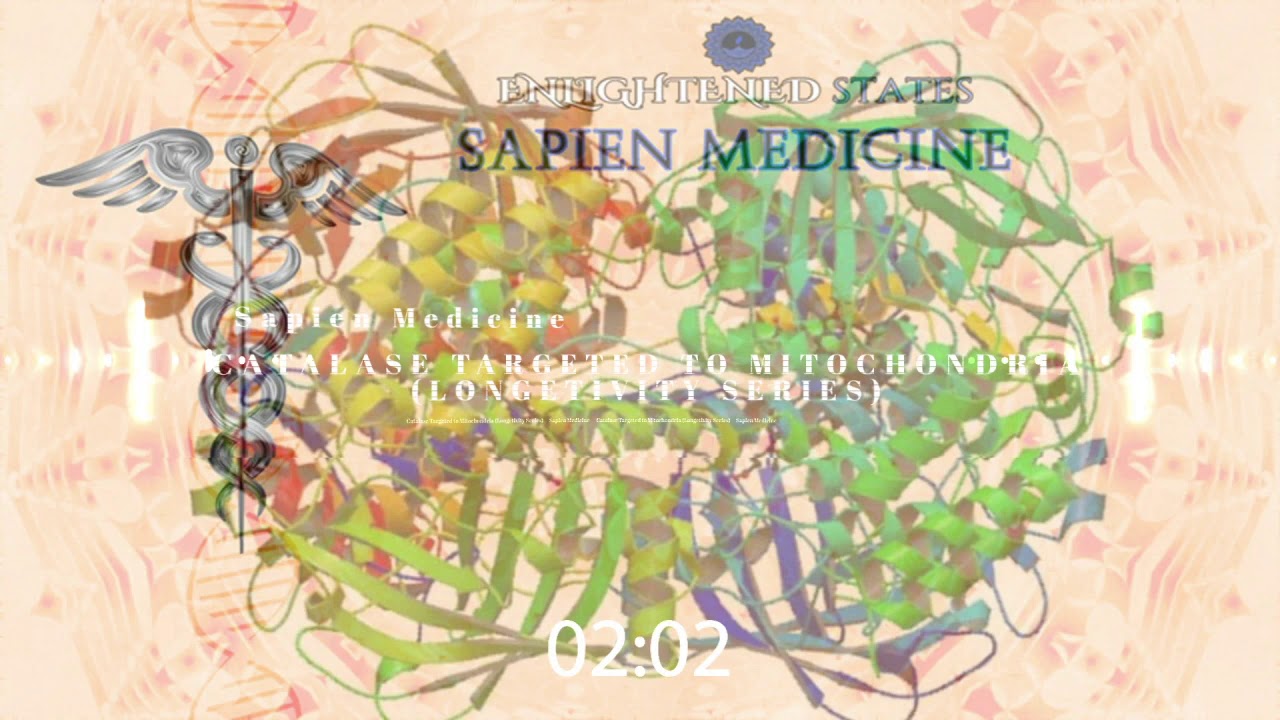Hi, I just wanted to know extactly what this treatment is designed to do exactly, and what those affects are supposed to achieve.
I will try to explain it.
Catalase is an antioxidant enzyme (speeds up chemical reactions).
Mitochondria are the energy producing organelles within the cell.
Mitochondria produce free radicals as part of their normal operation. These free radicals build up and damage the mitochondria, because they are highly reactive. As the mitochondria are damaged, they function less efficiently, and produce less energy for the cell and organism as a whole.
Catalase targeted to the mitochondria, can clear these free radicals more efficiently, so the mitochondria can function more effectively and therefore produce more energy.
Some benefits of mitochondria-targeted catalase include:
-
Longevity.
-
Protects against insulin resistance.
-
Helps protect brain cells.
-
Improves muscle function with aging.
Thank you for the detailed but concise response!
Many scientists believe that the complete aging process is caused by free radicals.
“We suggest
a revised version of Harman’s famous hypothesis featuring mitochondrial oxidative
and energy stresses as the root causes of aging. It is well known that cellular death
or apoptosis is triggered by energy stress or oxidative stress. There are convincing
data showing that as mitochondria age, mitochondrial DNA (mtDNA) accumulates
mutations, decreasing energy output. Protecting highly unsaturated mitochon-
drial membranes against oxidative stress also consumes an extraordinary amount
of energy. Thus, an aging cell faces a double whammy of energy stress: decreasing
energy production and high energy demand to maintain mitochondrial membrane
integrity. The net effect is that as cells age, an increasing percentage of energy output
from respiration is used for membrane maintenance.”
From “Human longevity” by David Valentine
Thanks for sharing this!
You’re welcome. This is audio is almost criminaly underrated. Of course it depends on how effective this field is and how effective this method (overexpressing catalase in mitochondria) is in humans, I suspect it’s less effective than in mice.
But even with that beeing said it’s one of my Top 3 anti-aging audios ,since it targets the roots of aging.
Actually the root would be the unsaturation of the cell membranes. Since the unsaturation correlates directly with the amount of free radical damage. But many people dont even know about it. Whatever, coconut oil for the win! :D
Definitely.
Also might be one of the áudio choices with the purpose of easing the effects of cytokines storm? @Alexander
Yeah I’m sure it helps to listen to this and vitamin D .
Sarcopenia is characterised by a significant loss of skeletal muscle mass [3] at a rate of 5% per decade, starting in the fourth decade [4] with a prevalence of 5-13% in people 60-70 years of age and 11-50% of people over 80 years [5]. Consequently, the progressive age-associated loss of muscle mass leads to significant weakness, frailty and decreased quality of life [6].
This study also suggests that H2O2 is the key ROS in the onset of sarcopenia and that the decline in antioxidant protection by catalase and GPx is indicative of antioxidant dysfunction and may therefore be a major contributing factor in the development or onset of sarcopenia.
ChatGPT: Mitochondrial-targeted catalase is a type of enzyme that has been studied for its potential role in promoting longevity and reducing age-related diseases. It is a form of catalase, an enzyme that helps to break down hydrogen peroxide into water and oxygen, and is targeted specifically to the mitochondria, which are the energy-producing organelles within cells.
The idea behind using mitochondrial-targeted catalase as a potential anti-aging therapy is based on the theory that oxidative damage caused by reactive oxygen species (ROS) produced by the mitochondria contributes to the aging process and age-related diseases. By specifically targeting catalase to the mitochondria, researchers hope to reduce this oxidative damage and potentially increase lifespan.
Studies in mice have shown that increasing the levels of mitochondrial-targeted catalase can extend lifespan and improve various age-related health markers, such as reducing age-related hearing loss and improving cardiovascular function. However, more research is needed to determine if this therapy could be effective in humans and to fully understand its potential benefits and risks.
In addition to potentially extending lifespan, there are several other potential benefits that have been associated with mitochondrial-targeted catalase. These include:
- Reducing oxidative stress: Reactive oxygen species (ROS) can cause damage to cells and tissues, and mitochondrial-targeted catalase may help to reduce this damage by breaking down hydrogen peroxide and reducing oxidative stress.
- Improving cardiovascular function: Studies in mice have shown that increasing the levels of mitochondrial-targeted catalase can improve heart function and reduce the risk of heart disease.
- Protecting against neurodegenerative diseases: Mitochondrial dysfunction and oxidative stress are thought to contribute to the development of neurodegenerative diseases such as Alzheimer’s and Parkinson’s disease. Studies have suggested that mitochondrial-targeted catalase may help to protect against these diseases by reducing oxidative damage.
- Enhancing exercise performance: Research has shown that increasing levels of mitochondrial-targeted catalase in muscle cells can improve exercise performance and reduce muscle fatigue.
It’s important to note that these potential benefits have primarily been observed in animal studies, and more research is needed to determine if they would translate to humans.
I notice that this audio causes an almost immediate increase in cognitive performance and reduction in brain fog.
Also my skin looks noticeably younger and I’m only 29, so this is not “just for old people”.

